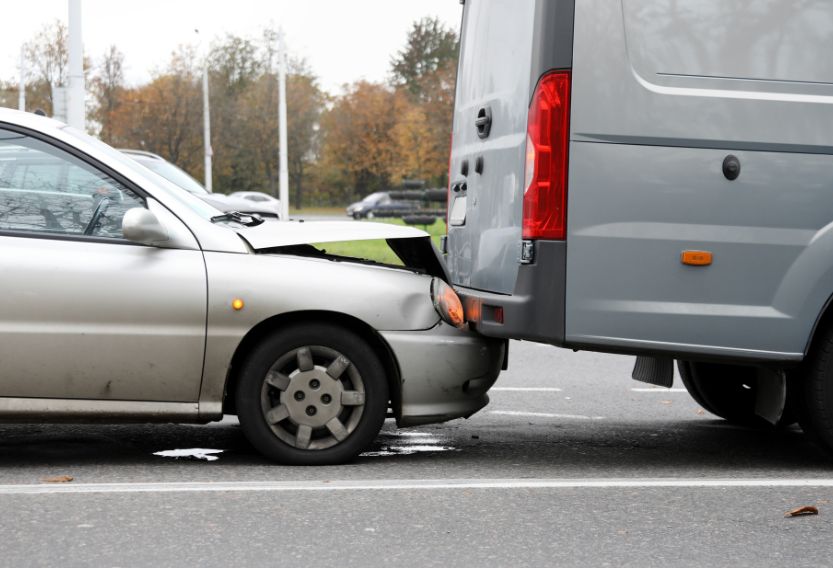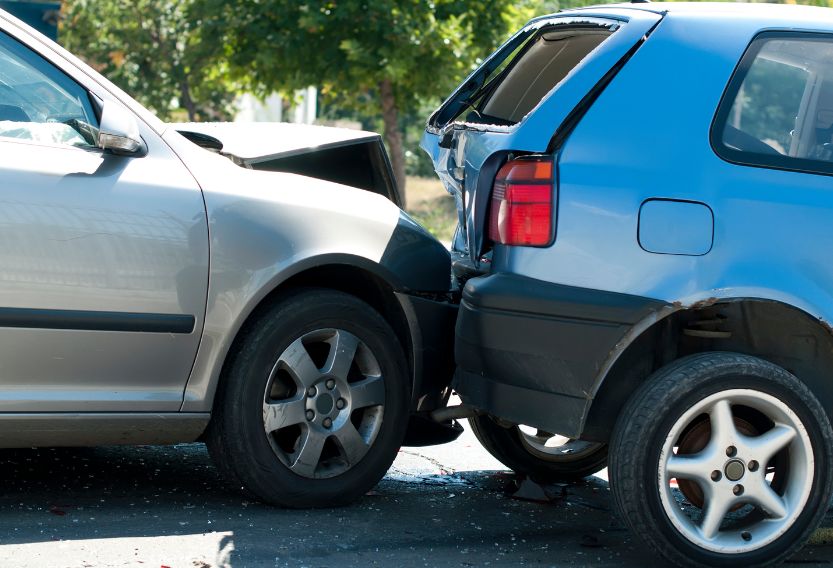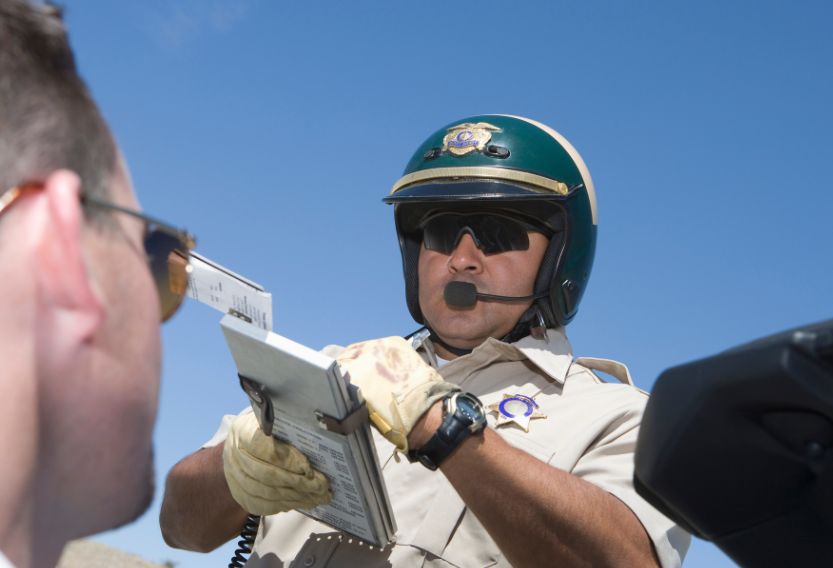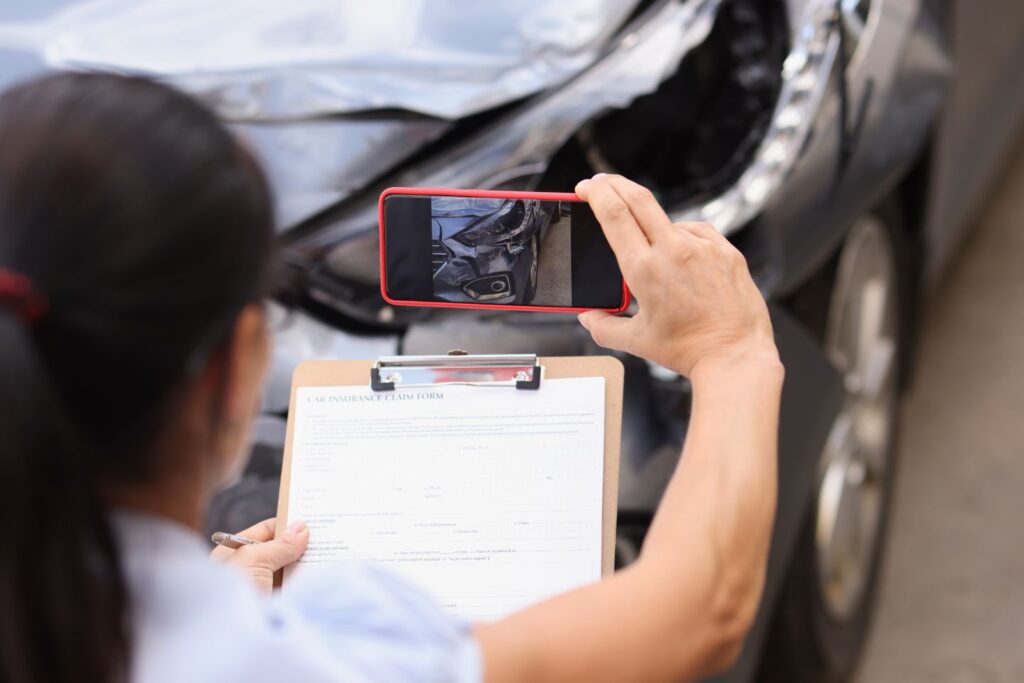A minor rear-end collision is usually a ‘fender bender’ between two or more vehicles that does not significantly damage a vehicle or hurt a driver. Such incidents often happen due to multiple reasons like driver error, weather conditions, and vehicle malfunction. Despite the fact that such accidents are not severe in nature, it is important to understand their causes and effects in order to potentially prevent them from occurring in the first place.
Despite being classified as minor, rear-end collisions can still have consequences, both in terms of vehicle repairs and the potential for whiplash injuries. It is essential for drivers to be aware of how to deal with these incidents, including the legal aspects and
Understanding Minor Rear-End Collision
Minor rear-end collisions are a common type of traffic accident and take place when one vehicle collides with the rear of another vehicle at a low speed and usually with minimal damage mainly because of slow-traffic or congestion.
It is important to be conscious of the key factors that lead to minor rear-end collisions in order to mitigate their risks. The first and foremost factor is the driver behavior as driving requires an individual to be very vigilant. Any kind of distractions can prove to be life-threatening and cause an accident. Additionally, tailgating (following too closely), aggressive driving, or failing to adjust to changing traffic conditions may also contribute to these crashes. Furthermore, different driver types can also influence the risk of a rear-end collision.

Second, vehicle performance is as important as the driver’s behavior. As it can also impact the likelihood of a minor rear-end collision. For instance, if a vehicle’s brakes are not functioning properly, it may require a greater distance to stop, which could result in a collision. Similarly, tires with poor traction are less able to grip the road surface, increasing the chances of a rear-end crash.
Third, road and environmental conditions also play a role in minor crashes. Rain and snow can cause roads to be slippery and may reduce tire traction and increase the stopping distance. Additionally, poor visibility from fog, rain, or snow may prevent drivers from seeing the vehicle ahead in time to react and avoid a collision.
It is rightly said, “better safe than sorry” which is why drivers must take precautions before setting out on their journey. Some of the precautions they can take are as follows.
- Maintain a safe following distance: It is recommended that drivers maintain at least a 3-second gap between their vehicle and the one in front, allowing sufficient time to react to any sudden stops or changes in traffic.
- Stay focused on the road: Do not indulge in activities that can divert attention from the road.
- Regular vehicle maintenance: It is advised to thoroughly check the vehicle and make sure that brakes, tires, and other essential components are in good working order.
- Adjust to road conditions: Drivers should not drive recklessly and increase the following distance in adverse weather or road conditions that may impact visibility or traction.
By being aware of the common factors that contribute to minor rear-end collisions and taking preventative measures, drivers can significantly reduce their risk of being involved in an accident.
Causes of Minor Rear-End Collision
Minor rear-end collisions are a routinely occurrence on roads but they may have adverse effects on an individual’s health, it is essential to be aware when behind the wheel. We discuss some of the major causes of minor rear-end collisions.


As mentioned earlier, distracted driving can sometimes prove to be life threatening. This is one of the major causes and a study has shown that in congested traffic, drivers are more likely to engage in activities that take their attention off the road, leading to increased rear-end collision risk. Common distractions include texting, eating, adjusting the radio, and even rubbernecking to view an accident on the opposite side of the road.
Another contributing factor is tailgating. When drivers follow too closely behind another vehicle, they have less time to react when the vehicle in front stops or slows down suddenly. To reduce the risk related to tailgating, experts recommend employing the three-second rule, extending the gap even more in poor weather conditions.
Also, overspeeding plays a crucial role in causing rear-end collisions. Driving at excessive speeds diminishes reaction time, and increases the chances of a minor accident escalating into a severe, even fatal injury. Slowing down and adhering to the speed limit is essential in preventing these types of collisions.
Here is a short list of other factors that may contribute to minor rear-end collisions:
- Poor weather conditions
- Inadequate vehicle maintenance
- Impaired driving due to alcohol
- Inexperience or aggressive driving
Ensuring proper vehicle maintenance can drastically reduce the likelihood of an accident. Equipping vehicles with safety features such as [City Safety systems] can assist in preventing rear-end collisions, especially at low speeds.
Taking safety precautions to reduce the risks of minor rear-end collisions cannot be stressed upon enough. Adhering to the traffic laws and rules and regular vehicle maintenance can be helpful in driving safely.
Effects of Minor Rear-End Collision
Minor rear-end collisions are common traffic incidents that typically occur when a vehicle strikes the rear of another vehicle. While these accidents are usually less severe compared to high-speed crashes, they can still cause various issues for both drivers and passengers involved.


One common effect of minor rear-end collisions is the occurrence of whiplash. Whiplash is a neck injury caused by the sudden and forceful back-and-forth movement of the head during an impact. It can result in symptoms like neck pain, stiffness, and limited range of motion1. Although it is generally considered a minor injury, cases of whiplash can sometimes lead to chronic pain or lasting discomfort if not treated properly.
In addition to whiplash, minor rear-end collisions can cause property damage to both vehicles involved in the accident. This may include damage to bumpers, taillights, and the vehicle’s paintwork. Property damage in these instances can lead to costly repairs, even if the collision occurred at low speeds.
From a traffic perspective, these accidents can have an impact on road safety. Findings from an analysis of headways for assessment of risk rear-end collision indicate that factors such as speed dispersion and road conditions play a significant role in the occurrence of minor rear-end collisions. Addressing these issues can help minimize the risk of further incidents and improve overall traffic flow.
It is also important to understand the potential legal consequences following a minor rear-end collision. In many cases, the driver of the vehicle that rear-ended the other car is deemed at fault for the accident. This can lead to fines, increased
In conclusion, minor rear-end collisions can have various effects on the individuals involved, as well as the larger traffic environment. Preventing these accidents can be achieved by maintaining proper following distances, adjusting driving behavior according to road conditions, and promoting overall safe driving practices.
Footnotes
Dealing With Minor Rear-End Collision
Minor rear-end collisions are common and can occur for various reasons, such as sudden braking or failing to maintain a safe distance between vehicles. Dealing with a minor rear-ended car accident may seem straightforward, but it is essential to take appropriate steps to ensure the safety of all parties involved and to properly document the incident.
First, move the vehicles to a safe location if possible. If the accident occurs in a high-traffic area, maneuvering the vehicles to the side of the road can reduce the risk of further accidents. Activate the vehicle’s hazard lights and, if necessary, use cones or flares to signal the accident to other drivers.
Check for injuries among all parties involved in the minor rear-end collision. While these accidents are typically low-impact, individuals may still sustain whiplash or other minor injuries. Assess the condition of every person and call for medical assistance if needed.
Exchange information with the other driver(s) involved in the accident. Be sure to obtain the following details:
- Name
- Address
- Phone number
- License plate number
- Driver’s license number
- Insurance policy information
It could be beneficial to take pictures of the minor rear-ended car accident scene and any resulting damage to the vehicles. These images might serve as handy evidence when dealing with
Additionally, consider contacting law enforcement to report the incident. In some jurisdictions, it may be mandatory to notify the police about accidents involving property damage or injuries. A police report can provide unbiased documentation of the minor rear-end collision, which may help with
Lastly, contact your
By following these steps, handling a minor rear-end collision can be a manageable and relatively smooth process, ensuring the safety and well-being of those involved while protecting against potential legal or financial complications.
Legal Aspects and Insurance Claims
Although minor rear-end collisions often result in minimal damage to the vehicles involved, it is indispensable to understand the legal technicalities and the process of
In most cases, the driver who rear-ends another vehicle is considered at fault for the collision. This assumption is based on the premise that every driver must maintain a safe distance from the vehicle in front and be prepared to stop when necessary. However, there are exceptions where the lead driver may share some responsibility, such as sudden braking or having non-functioning brake lights.


When assessing a minor rear end car accident, the first step is usually to exchange information with the other driver. This information includes names, contact details,
It is essential to report the accident to your
Nevertheless, seeking legal assistance can become necessary in case of damages exceeding specified thresholds or if there are disputes between parties. With the help and guidance of a skilful and seasoned lawyer, it can become easy for you to understand and deal with the complexities of medicolegal issues related to motor vehicle collisions.
An experienced lawyer can guide you through Important points to remember:
- Responsibility for a minor rear-end collision typically lies with the driver at the rear.
- Always exchange information and document the scene.
- Report the accident to your
insurance company promptly. - Seek legal advice if necessary.
By understanding the legal aspects and
Preventing Minor Rear-End Collision
Minor rear-end collisions often occur when drivers fail to maintain a safe distance or become distracted, leading to a sudden need for braking. Fortunately, there are several prevention strategies and technologies designed to address these issues and reduce the likelihood of such accidents.
One effective technique is adhering to the three-second rule. This rule suggests that a driver should maintain at least a three-second gap between their vehicle and the one in front. To measure this gap, drivers can observe a stationary object on the road and count the time it takes for the leading vehicle and their own to pass it. This rule not only provides ample reaction time to brake but also adapts to various driving conditions and speeds.
In addition to maintaining safe distances, avoiding distractions is crucial. Common distractions include cell phone use, eating, and adjusting car settings. By committing to focus solely on the road, drivers can react more promptly to any sudden changes in the driving environment.
Moreover, technological advancements offer a promising solution in the form of Advanced Driver Assistance Systems (ADAS). These systems leverage sensors, cameras, and radar technology to detect potential collisions. One such system, referred to as City Safety, specifically targets prevention of rear-end collisions at low speeds. It can autonomously apply brakes when the driver fails to react in time, helping to avert or mitigate the impact of accidents.
Finally, regular vehicle maintenance plays a crucial role in prevention. Ensuring that brake systems are functioning optimally and tires possess adequate tread depth can make a significant difference in a driver’s ability to avoid a minor rear-end collision.
By combining attentive driving practices, modern technology, and proper vehicle maintenance, drivers can significantly reduce their chances of being involved in a minor rear-end collision.
Key Takeaways
|
Frequently Asked Questions
What are the common injuries from a minor rear-end collision?
In a minor rear-end collision, injuries are typically less severe and can include soft tissue injuries such as whiplash, which affects muscles, ligaments, and tendons. It is also possible to sustain bruises or contusions, especially in the lower extremities.
How is fault determined in minor rear-end accidents?
Fault in minor rear-end accidents is generally determined based on negligence. In most cases, the driver who rear-ends another vehicle is deemed to be at-fault, as they are responsible for maintaining a safe following distance and being prepared to stop when needed.
What steps should be taken after a minor rear-end collision with no visible damage?
Even if there is no visible damage, it is essential to exchange contact and
Can whiplash occur in a minor rear-end collision?
Yes, whiplash can occur in minor rear-end collisions. It is caused when the head and neck are suddenly jerked forward and then backward, straining the soft tissues in the neck. The severity of whiplash can vary, and it is essential to seek immediate medical help if necessary.
Are there any long-term effects to be aware of after a minor rear-end collision?
It is vital to consult a healthcare professional after a minor accident as some individuals may experience symptoms that persist such as persistent neck pain, headaches or psychological issues like anxiety and have long-term effects after a minor rear-end collision.
What are the typical repair options for minor rear-end damage?
Repair options for minor rear-end damage primarily depend on the extent of the damage. For cosmetic issues like paint scratches or small dents, paintless dent repair or touch-up paint may be sufficient. If the collision caused damage to the vehicle’s structure or alignment, a professional body shop should be consulted to perform necessary repairs.
Have you or your loved one recently been in a minor rear-end collision? Then, do not let a minor collision dictate the course of your life and reach out to The Personal Injury Centre today for a free consultation.Your well-being matters, let our specialized team connect you with an attorney to handle the legal complexities while you concentrate on healing. Take control, take action, and let us be your partners in the road to recovery. Contact us on our toll free number 1-800-846-23-21.



